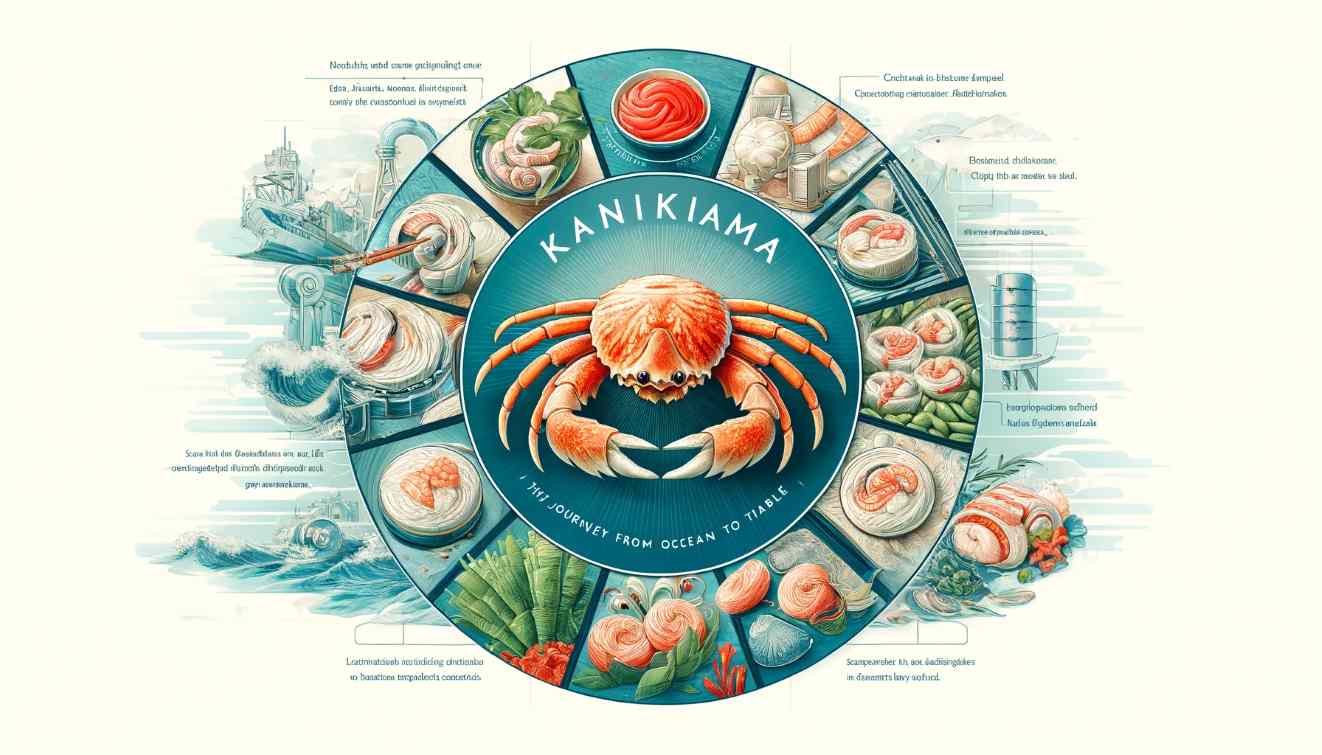In the dynamism and change that characterize the culinary arts, there’s a weird ingredient occupying a bizarre place: Kanikama. Most people are dismissive, tagging it with another name: imitation crab. And yet, the Kanikama world includes a rich historical background, a complex manufacturing process, and multi-faceted roles in global cuisines. In this article, we will take a magnifying glass and discover Kanikama’s secrets: its place of origin, how it is produced, cultural impact, and how, with its place in the culinary world, it is one of those very controversial.
The Origin Story of Kanikama
Kanikama originates from Japan, a land known for its innovative approaches to seafood. This is a product dating back to the early 1970s. It is very different from all other products in the seafood industry that tend to offer a natural ‘sea to table’ experience.
Its creators developed it as a more affordable and economical substitute for crab meat. The thought was to give the masses an affordable and sustainable food experience, an innovative approach overall in the department of seafood cuisine.
The Art of Manufacturing Kanikama
This is not usually a country, but it is common in countries like Japan. The preparation of Kanikama itself is exciting, combining traditional techniques used in processing seafood and cutting-edge culinary technologies. The primary ingredient used usually is white fish—most of the time, Al The crab meat is then extracted from the shell, minced, and reprocessed with other ingredients, such as starch, egg whites, and crab flavorings, into a texture and taste like the real crab. It is called a surimi mixture, then shaped and colored into imitation crab legs or chunks.
The process, though, mimics crab meat and is an art. This manufacturers have perfected their ways over time, and in doing so, texture and flavor are improving ever more to get closer, in reality, to real crab. This relentless pursuit of perfection demonstrates the dedication and craftsmanship inherent in Kanikama production.
Kanikama in Global Cuisine
Kanikama has quickly become part of various cuisines in the world. This is a kind of versatility and, instead, the idea of affordability that has made it most preferred in most cuisines. Whether added as an integral part of Japanese sushi rolls or a central part of seafood salads of the West, Kanikama transcends culture and cuisine.
Besides this, avant-garde chefs have started experimenting with Kanikama in their novel recipes and fusion food. The California roll has become the poster child of Japanese-American fusion, featuring seasoned rice, seaweed, avocado, cucumber, and Kanikama.
In this combination, the imitation crab in California rolls gives some crab flavor, making sushi available and affordable for the public.
Nutritional Profile of Kanikama
Although Kanikama does not equal the nutritional value of real crab meat, it still provides some health benefits. It contains low fat and a small number of calories, so it is suitable for those who keep a diet or their figure in check.
In addition, it is a prime source of first-class protein. The only thing is that kanikama often contains various additives and preservatives, which not all people’s dietary requirements or preferences can accept.
The Controversy Surrounding Kanikama
However, Kanikama has had its critics. Purists often argue that the artificial, cheap imitation will never, in any circumstances, come anywhere near the texture and flavor of real crab meat. Furthermore, critics have raised concerns about the additives used in its production, such as artificial flavors and colors. The proponents of Kanikama argue that this imitation is a perfect example of sustainable seafood. Where overfishing persists as a nightmare in most parts of the world, Kanikama comes to be an eco-friendly option. In general, it offers an alternative to crab meat sourced from unsustainable sources.
The Future of Kanikama
Kanikama, for the future, is constantly under development. Modern consumer trends are directed to the production of Kanikama with a more natural and organically flavored product to meet the requirements of a growing number of health-conscious customers. Moreover, in developing plant-based seafood substitutes, they have a potential field to create and innovate.
So, the journey of the modest imitation crab discloses nothing else but its high versatility, affordability, and adaptability. The product has opened its doors toward new culinary experiences and taken its place in the sky of many beloved dishes.
Conclusion
Kanikama, often disregarded with a simple tag of imitation crab, has a tale rich in cultural heritage, culinary innovation, and international influence. Its journey from Japan to the kitchen tables of the world could symbolize ingenuity, resilience, and constant evolution to attend to the consumers’ dynamic needs. Whether wrapped around in a sushi roll, slushed in a salad, or experimented with in new culinary preparations, this can never cease to cause a revolution in culinary arts, even if one considers every other element in isolation.






Leave a Reply